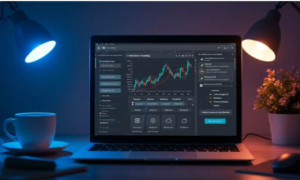Commodities play a vital role in the global economy, serving as the building blocks of various industries and economies. For those trading commodities, understanding the factors that influence their prices is paramount. In this article, we’ll explore some of the key factors that cause commodity prices to change, shedding light on the complex world of trading commodities through a commodity trading platform.
Factors Influencing Commodity Price Changes
1. Supply and Demand Dynamics
The most fundamental factor affecting commodity prices is the balance between supply and demand. When the demand for a particular commodity surpasses its supply, prices tend to rise. Conversely, when supply exceeds demand, prices tend to decline.
2. Weather and Climate Events
Weather conditions, such as droughts, floods, hurricanes, and extreme temperatures, can significantly impact the production and supply of agricultural commodities. A poor harvest due to adverse weather can lead to increased prices for crops like wheat, corn, or coffee.
3. Geopolitical Tensions
Geopolitical tensions and conflicts in commodity-producing regions can disrupt supply chains and lead to fluctuations in prices. Trade disputes, sanctions, or political instability can all influence the availability and pricing of commodities.
4. Economic Indicators
Economic indicators, such as GDP growth, employment rates, and consumer spending, can provide insight into the health of the economy. A robust economy often leads to increased demand for commodities, resulting in higher prices.
5. Currency Exchange Rates
Commodity prices are also influenced by currency exchange rates. When the value of a currency falls relative to another currency, commodity prices in the weaker currency tend to rise because it takes more of that currency to purchase the same amount of the commodity.
6. Global Events and Natural Disasters
Unforeseen global events, like the COVID-19 pandemic, can have a profound impact on commodity prices. Additionally, natural disasters, such as earthquakes or tsunamis, can disrupt the supply chain and lead to price fluctuations.
7. Speculation and Investment Flows
Commodity markets attract various types of participants, including speculators and investors. Speculative trading activity can lead to price swings unrelated to supply and demand fundamentals. Large-scale investment flows into commodities can also impact prices.
Trading Commodities Through a Commodity Trading Platform
For those interested in trading commodities, using a commodity trading platform offers several advantages:
Access to Multiple Markets: Commodity trading platforms provide access to a wide range of commodities, allowing traders to diversify their portfolios.
Real-Time Data: These platforms offer real-time market data, news, and charts, enabling traders to make informed decisions.
Risk Management Tools: Commodity trading platforms often include risk management tools like stop-loss orders, helping traders protect their investments.
Leverage: Traders can use leverage to enhance their positions, potentially amplifying profits. However, it’s essential to use leverage with caution due to its inherent risks.
Education and Analysis: Many commodity trading platforms offer educational resources and analysis tools to assist traders in their decision-making processes.
Conclusion
Trading commodities can be a lucrative endeavor, but it requires a deep understanding of the factors that cause price changes. Supply and demand dynamics, weather events, geopolitical tensions, economic indicators, currency exchange rates, global events, and speculative activity all play a role in influencing commodity prices.
To engage in trading commodities effectively, using a commodity trading platform is invaluable. These platforms offer access to multiple markets, real-time data, risk management tools, leverage, and educational resources. By combining knowledge of market dynamics with the features of a commodity trading platform, traders can navigate the complex world of commodity trading with confidence.


































